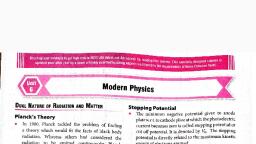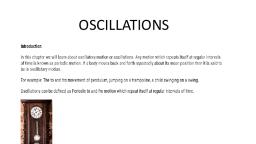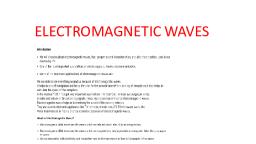Question 2 :
A light ray is incident on a transparent medium of $\mu =$ 1.732 at the polarizing angle. The angle of refraction is :<br/>
Question 7 :
When a ray is incident on a medium of refractive index $n$ at Brewster's angle, it gets
Question 8 :
Consider the following statements A and B. Identify the correct statements.<br/>(A) Polarized light can be used to study the helical structure of nucleic acids.<br/>(B) Optical axis is a direction and not any particular line in the crystal.<br/><br/>
Question 9 :
Light waves exhibit polarization but sound waves do not exhibit polarization because they are not:<br/>
Question 10 :
The critical angle for total internal reflection for a substance is $45^{\circ}$. The polarizing angle for this substance is ($\tan 54^{\circ}44'=\sqrt{2}$) :<br/>
Question 11 :
In double refraction, the stationary image can be produced by :<br/><br/>
Question 12 :
Plane polarized light is passed through a Polaroid. Now the Polaroid is given one complete rotation about the direction of light propagation. When viewed through another Polaroid (analyser), one of the following is observed:<br/><br/>
Question 13 :
When an unpolarised light is polarized, then the intensity of light of the polarized wave :<br/>
Question 16 :
A light ray is incident on a glass slab it is partially reflected and partially transmitted. Then the reflected ray is<br>
Question 17 :
Unpolarized light of intensity $I_{0}$ is incident on a polarizer and the emerging light strikes a second polarizing filter with its axis at 45$^{\circ}$ to that of the first. The intensity of the emerging beam :<br/>
Question 18 :
According to Maxwell ,most of the opticalproperties of light depend on<br>
Question 19 :
When an unpolarised light is polarized, then the intensity of light of the polarized wave :<br/>
Question 20 :
A ray of light is incident on the surface of a glass plate at an angle of incidence equal to Brewster's angle $\phi$. If $\mu$ represents the refractive index of glass with respect to air, then the angle between the reflected and the refracted rays is
Question 21 :
Why do polarized sun glasses block out some reflected light (glare), but do not block out light that has not been reflected?
Question 23 :
When unpolarised light passes through a Polaroid sheet the beam that emerges from it is plane polarized. This is due to selective :<br/>
Question 25 :
Which of the following properties shows that light is a transverse wave?
Question 26 :
A calcite crystal is placed over a dot on a piece of paper and rotated. On seeing through the calcite, one will see :<br>
Question 27 :
Making a light wave vibrate in only one plane is known as :<br/>
Question 28 :
Assertion: When light ray is incident at polarising angle on glass, reflected light is completely polarised.
Reason: The intensity of light decreases in polarisation.
Question 30 :
When light is incident on a glass block at polarizing angle<br/>a) reflected ray is plane polarized<br/>b) reflected and refracted rays are perpendicular<br/>c) reflected and refracted rays are partially polarized<br/>d) refracted ray is partially polarised<br/>
Question 34 :
A beam of light is incident on a liquid of refractive index 1.40. The reflected rays are completely polarized. The angle of refraction of the beam is ($\tan 54.5^{\circ}=1.4$):<br/>
Question 38 :
In the propagation of light waves, the angle between the plane of vibration &  plane of polarisation is:
Question 39 :
In Young's double-slit experiment, the density of light at a point on the screen, where the path difference is $\lambda$ is$I$. The intensity of light at s point where the path difference becomes $\lambda/3$ is
Question 40 :
In double slit experiment fringes are obtained using light of wavelength $4800A^o$. One slit is covered with a thin glass film of refractive index $1.4$ and another slit iscovered by a film of same thickness but refractive index $1.7$. By doing so the central fringe is shifted to fifth bright fringe in the original pattern. The thickness of glass film is
Question 41 :
Two slits, $4 mm$ apart, are illuminated by a light of wavelength $6000 \mathring{A}.$ What will be the fringe width on a screen placed $2m$ from the slits?
Question 42 :
In young's double slit experiment $\beta $ is the fringe width and I$_{o}$ is the intensity of the central bright fringe. What will be the intensity at a distance x from the central bright fringe?
Question 43 :
In a Young's Double Slit experiment, films of thickness $t_A$ and $t_B$ and refractive indices $\mu_A$ and $\mu_B$ are placed in front of slits A and B respectively. If $\mu_At_A=\mu_Bt_B$, then the central maxima may<br/>
Question 44 :
If in a Young's double slit experiment, the slit width is 3 cm, the separation between slits and screen is 70cm and wavelength of light is 1000 A , then fringe width will be ($\mu $ = 1.5)
Question 45 :
A $20\ cm$ length of a certain solution causes right-handed rotation of $38^{o}$. A $30\ cm$ lemgth of another solution causes left-handed rotation of $24^{o}$. The optical rotation caused by $30\ cm$ length of a mixture of the above solution is the volume ration $1:2$ is




















































